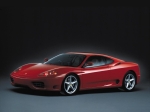 Europe is a historical and cultural continent , and a geographical subcontinent , forming the westernmost part of the Eurasian supercontinent. Europe is bounded to the north by the Arctic Ocean , to the west by the Atlantic Ocean , to the south by the Mediterranean Sea and the Black Sea , and to the east by the Ural Mountains and the Caspian Sea
Europe is a historical and cultural continent , and a geographical subcontinent , forming the westernmost part of the Eurasian supercontinent. Europe is bounded to the north by the Arctic Ocean , to the west by the Atlantic Ocean , to the south by the Mediterranean Sea and the Black Sea , and to the east by the Ural Mountains and the Caspian Sea
In terms of area , Europe is the world's second smallest continent, with an area of 10,600,000 km² (4,140,625 square miles), making it larger than Australia only.
In terms of population it is the third largest continent after Asia and Africa . The population of Europe in 2003 was estimated to be 799,466,000: roughly one eighth of the world's population.
Etymology
 In ancient Greek mythology, Europa was a Phoenician princess who was abducted by a bull-shaped Zeus and taken to the island of Crete , where she gave birth to Minos . For Homer , Europa was a mythological queen of Crete, not a geographical designation. Later Europa stood for mainland Greece and by 500 BC its meaning was extended to lands to the north.
In ancient Greek mythology, Europa was a Phoenician princess who was abducted by a bull-shaped Zeus and taken to the island of Crete , where she gave birth to Minos . For Homer , Europa was a mythological queen of Crete, not a geographical designation. Later Europa stood for mainland Greece and by 500 BC its meaning was extended to lands to the north.
The term Europe is generally derived from Greek words meaning broad ( eurys ) and face ( ops ). A minority, however, see a Semitic origin, pointing to the Semitic word gharoob which means "sunset". From a Middle Eastern viewpoint, the sun sets over Europe: the lands to the west.
Geography and extent
Geographically Europe is a part of the larger landmass known as Eurasia . The continent begins at the Ural Mountains in Russia , which defines Europe's eastern boundary with Asia . The southeast boundary with Asia isn't universally defined, with either the Ural or Emba rivers serving as possible boundaries, continuing with the Caspian Sea , and either the Kuma and Manych rivers or the Caucasus mountains as possibilities, and onto the Black Sea ; the Bosporus , the Sea of Marmara , and the Dardanelles conclude the Asian boundary. The Mediterranean Sea to the south separates Europe from Africa . The western boundary is the Atlantic Ocean , but Iceland , much farther away than the nearest points of Africa and Asia , is also included in Europe. There is ongoing debate on where the geographical centre of Europe is.
In practice the borders of Europe are often drawn with greater regard to political, economic, and other cultural considerations. This has led to there being several different "Europes" that are not always identical in size, including or excluding countries according to the definition of "Europe" used.
Almost all European countries are members of the Council of Europe , the exceptions being Belarus , the Holy See ( Vatican City ), and Kazakhstan .
The idea of a European "continent" is not universally held. Some non-European geographical texts refer to a Eurasian Continent, or to a European "sub-continent", given that "Europe" is not surrounded by sea and is, in any case, much more a cultural than a geographically definable area. In the past concepts such as "Christendom" were deemed more important.
In another usage, "Europe" is increasingly being used as a short-form for the European Union (EU) and its members, currently consisting of 25 sovereign nations. A number of other European countries are negotiating for membership, and several more are expected to begin negotiations in the future.




